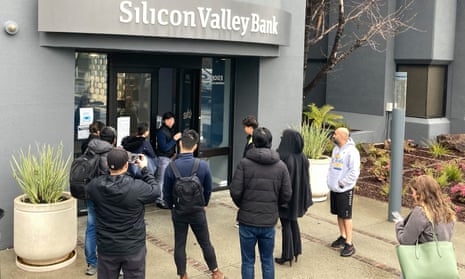Tech companies and their bank of choice are in crisis: there have been widespread layoffs, and Silicon Valley Bank (SVB) recently collapsed. So what went wrong?
Let’s start with tech companies. There are at least two types: “new tech” and “old tech”. The new-tech companies are usually small and dynamic, and their funding mix is predominantly made up of private capital (typically venture capital or angel investors). Conversely, old-tech companies have a more interesting mix of equity and debt to fund their activity – and therefore a more complex relationship with financial markets and institutions. This is partially down to the different levels of risk of the two asset classes, which also drives their different accessibility to retail investors.
All this said, there is little doubt that increases in interest rates after a prolonged period of quantitative easing have affected market expectations and liquidity, driving down companies’ valuations across all sectors. It is also true that the technology sector, which benefited from the most aggressive growth just before and during the pandemic, has been particularly badly hit.
Nonetheless, while old-tech companies have suffered through the usual transmission channels of monetary policy – such as dried liquidity, the downturn of aggregate demand and the new challenges of a post-globalised world, including supply-chain management – new-tech ones have run across their own problems.
Higher interest rates for them have meant something like a natural selection process. There is more competition for private capital funds and the run to “safe havens” during downturns, as well as increased financial challenges for startups that are not yet profitable.
Under this intense financial pressure, the SVB bubble burst. The bank, through its “startup banking”, tried to get the best of both worlds: it was a deposit-taking institution but also “designed for the ambitious”, backing startups from seed stage to series A investment. Funded companies were asked to keep their cash in the bank as deposits and SVB used a vast part of them to buy held-to-maturity long-term financial assets, mostly US government bonds.
This is a very well-known “game” that many banks have been playing since the beginning of time: using short term liabilities (typically deposits) to buy long-term assets (corporate, more often government bonds) and profit from the interest rate difference. The riskiness of the game is also well known, since banks hold only a fraction of the overall deposits due to their customers; if they all rushed to withdraw at the same time, banks would be in big trouble.
This maturity mismatch, the rollback from the regulation on stress tests for banks during the Trump administration, and the aggressive “venture” attitude of the bank created the conditions for a perfect storm.
When inflation hit, interest rates started their escalation, affecting both sides of the balance sheet. The asset side of SVB, mainly made of government bonds supposed to be held until maturity, suffered from a market value lower than the purchase price. This prompted a withdrawal of deposits as clients worried that the bank would not be able to return their money, and was exacerbated by the overall conditions of already distressed startups. SVB was technically insolvent – and market expectations and contagion did the rest.
So far, this is all finance; so what of the “real economy” side of the story? It is happening everywhere around it. Layoffs in the tech sector are mainly affecting old tech. They are the result of competitive pressure, post-pandemic adjustment and the attempt to keep up with margins in a downturn phase, where the aggregate demand is depressed by inflation, tightening monetary policy and geopolitical issues.
Following the financial crisis in 2008, there has been an overwhelming amount of money sloshing around the market. When this tide of money went out, it was clear to see who was swimming without bathers: that is, which companies were overvalued or overexposed to financial risk, and a bank that had a risky balance sheet. Proper regulation was already in place to prevent undercapitalisation, but in the future maybe we need to look more closely at the valuation of new tech companies and treat them as proper alternative asset classes (assets that are not stocks, bonds or cash).
But as much as being the problem, tech may well be the solution, too. As economic theory has taught us, technology can boost economic growth and financial returns and improve our living conditions. Therefore we keep turning our passionate, professional, hopeful attention to this sector.
Maurizio Fiaschetti is a lecturer in banking and finance
